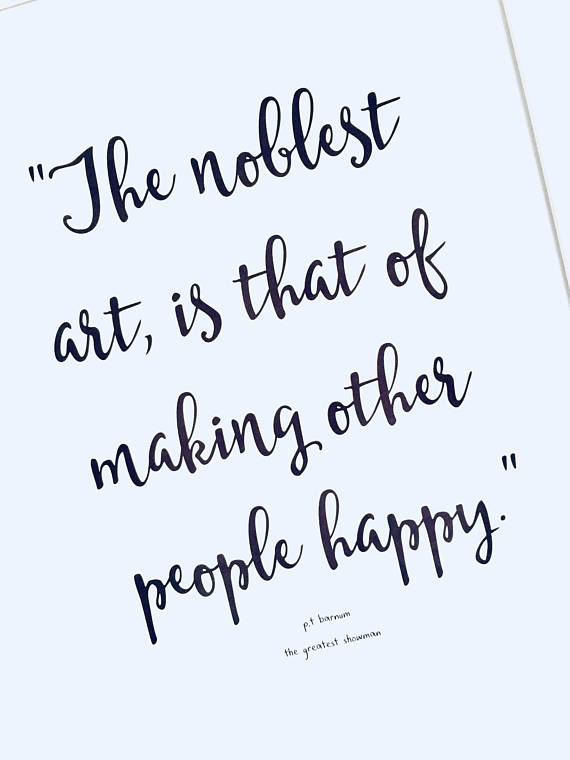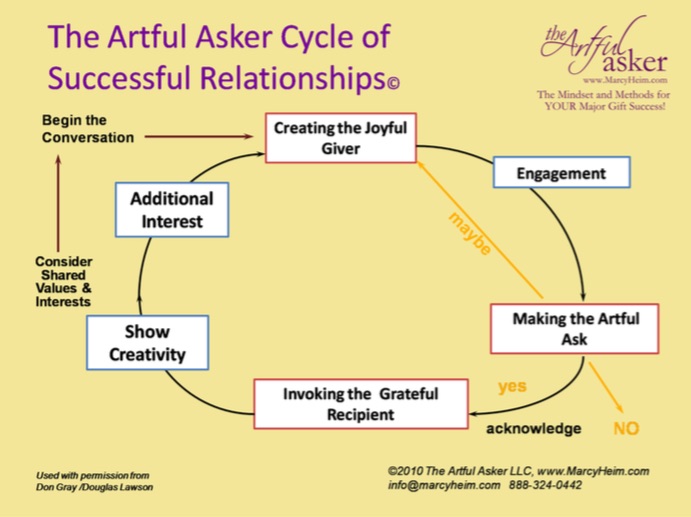You could feel the excitement as the dots connected at my MORE Major Gifts workshop! Artful relationship  management! YES!
management! YES!
This class, for the first time, contained a Board President, Director of Development and Development Assistant – all from the same organization! You can be sure they will meet a massive year-end matching challenge after attending together! WoHOO!
Regardless of the role you play, funding your mission is fulfilling like nothing else!
It can also be overwhelming and frustrating. We ALL share a common theme of too many distractions, too many tasks to get done, too much pulling us away from major gift work and just too much.
Here are Four Tips for Finding YOURSELF on the “Fulfilled” side of the equation.
4 Tips for Finding Fulfillment in Fundraising!
1. Focus; If only we could focus on being focused!
- Phone calls, Email messages, Text messages, Notifications, Facebook updates, LinkedIn requests, Instagram, Snap, Twitter feeds, and mindless YouTube videos all scream…LOOK AT ME.
- TV ads, Magazines, Bumper stickers, Car wraps and Billboards scream…LOOK AT ME!
- Today’s news “crisis” Colorful banner ads, pop windows, click bait, fake news, unwanted survey’s, sensational and misleading headlines, endless hyperlinks all BEG for your click.
The goal of these relentless, aggressive siren songs from our environment? Divert your attention so that what was once yours is now theirs – your focus. Your attention, energy, money (whatever) is now focused on them. Is it really any surprise that we are becoming less efficient, lagging in productivity and feeling more scattered?
The answer: Make the complex SIMPLE.
- Ask yourself, “What will I do today to move my most important relationships forward?”
- Skip a day on social media
- Turn off the TV and don’t listen to the news or at least don’t go into drama over it
- Start each day with gratitude calls – gratitude brings clarity
- Listen to music with no vocals – just music
- Reduce options in your life – Fewer restaurants, fewer activities. This sounds limiting, but actually will bring you calm.
- Create a short “Yes” list of key priorities and stick to it. Say, “No” more.
- Pile everything on your desk into one pile at the end of the day – looking less cluttered looks simpler when you come in tomorrow.
- Keep a list of the day’s GET To Do’s (5 max) posted in the same place – in clear view
- Schedule the 5 most important tasks you are doing in the day as appointments
- When something takes you away – a donor drops in, great gift in the mail – say, “I choose to welcome this new action into my day” and embrace it, welcome it. This lets you be joyful instead of resentful.
- Be completely quiet and still for 5 minutes and breath
- Make your bed
2. Forward Thinking
You crack up if you are constantly looking in the rear-view mirror. Drive your car and your life the same – with forward thinking.
- Stop saying, “You always…” about others or yourself. That drags along the past and doesn’t acknowledge that people can change.
- Each morning you get to decide how you will walk through your day. “I create my Life!”
- Look forward to the results you want – have goals that excite you!
- Talk as if the results you want have already happened. “When we complete this new building drive the new exhibits will wow our young science visitors!”
- Talk about your donors as investors. “With John’s investment and Sarah’s investment we will take a giant step forward.” Talk about these gifts coming in – it will pull you into taking actions with the donors because you get eager to have the result you are talking about.
- Endowments will ensure good continues. Talk about endowment and the future. Have a great donor story to share and share it a lot!
- ONLY look back at the end of each day to CELEBRATE what you DID get done this day!
3. Fun
Another day, another 24 hours of overwhelming demands. NO! Laugh. Just 
- Smile
- Bring healthy food to share
- Learn 3 corny, funny jokes…ie What did one sidewalk say to the other sidewalk? Meet you on the corner. HAHAHAHAHA.
- Say nice things to others with energy and sincerity.
- Blow bubbles.
- Send flowers.
- Leave little notes on your colleagues’ desks.
- Be fun to be with.
- Say, “I GET to do this work.” Shake this feeling of “Have to.” You picked this work and it is wonderful work – don’t allow it to become a mental chore for you.
4. Friendships
Funerals aren’t the only time to appreciate those around you as “friends.”
- Have you gathered a group of “friends” that gripe about the world being distressing? Do you engage in the drama or, as Nelson Mandela would advise, rise above it?
- Hug a porcupine. We share the same values. Practice truly appreciating that someone believes exactly the opposite you do. They are not stupid, or not enlightened, or wrong or bad. They just don’t believe what you do.
- Take a suspicious view of “facts.” As a scientist, my research would involve collecting data, analyzing that data, interpreting that data and inferring information from it. There were many opportunities to accidently or on purpose skew the results. And you never “finish.” Tomorrow there will be a deeper level of understanding that changes everything you once believed as fact. Butter, now exonerated, is a great example. In other words – don’t judge others.
- Embrace every opportunity to engage others in getting your goals accomplished. Delegate clearly and often in every way possible! (and it’s ok if they mess up and don’t do it the way you do it)
- Are your donors friends or not? Do you only see them as sources of money and it is your professional work to shift that money to your organization? It’s less complicated not to care, I get that but I’ll still go for “friendships” versus “professional acquaintances.” To me this pulls me to be more focused on the donor’s outcomes as they relate to our funding priorities.
- Be thankful every day for ALL of your relationships. Best time is to say, “I am grateful for”…and list the names as you are laying in bed going to sleep.
For our fundraising work to be fulfilling, it must be focused on results that inspire us, forward thinking – looking to the good we are creating, fun and filled with laughter and filled with relationships managed with simple respect, kindness and love.
You are doing honorable, wonderful work. I applaud you and I am here for you – always.
Invest in JOY®


Marcy Heim is a trusted authority in the development profession and helps organizations and educational institutions boost their major gift programs through artful, long-term relationship building that dramatically increases fundraising success while promoting increased staff job satisfaction. To receive a free chapter from Marcy’s book, Empower Your Board to Serve as Effective Development Ambassadors, click here.
Questions: Contact KK Konicek at KK@MarcyHeim.com


 As much as I am deliberately in the moment, present, drinking in every minute of this glorious summer, it is slipping past too fast. Do you ever feel this?
As much as I am deliberately in the moment, present, drinking in every minute of this glorious summer, it is slipping past too fast. Do you ever feel this?


 through obstacles and blow through the dramas of the day.
through obstacles and blow through the dramas of the day. have to deal with — your development work, event, deadline, kids, volunteer work — and shout out loud, “Thank you for all of this in my life! I am grateful for this work, my family, my service. I am gratified I have the talent, resources and abilities to be given these many things to do!” Now just start one. You feel better, right?
have to deal with — your development work, event, deadline, kids, volunteer work — and shout out loud, “Thank you for all of this in my life! I am grateful for this work, my family, my service. I am gratified I have the talent, resources and abilities to be given these many things to do!” Now just start one. You feel better, right?





 During my time in South Africa I experienced incredible animals, oceans, mountains and locals. In Cape Town, Nelson Mandela’s island prison cell was a bold testimonial that we can, indeed, manage our mindset no matter the circumstances. So thank you. Thank you for allowing me to be mostly without internet, and out of touch, for much of the trip.
During my time in South Africa I experienced incredible animals, oceans, mountains and locals. In Cape Town, Nelson Mandela’s island prison cell was a bold testimonial that we can, indeed, manage our mindset no matter the circumstances. So thank you. Thank you for allowing me to be mostly without internet, and out of touch, for much of the trip.







